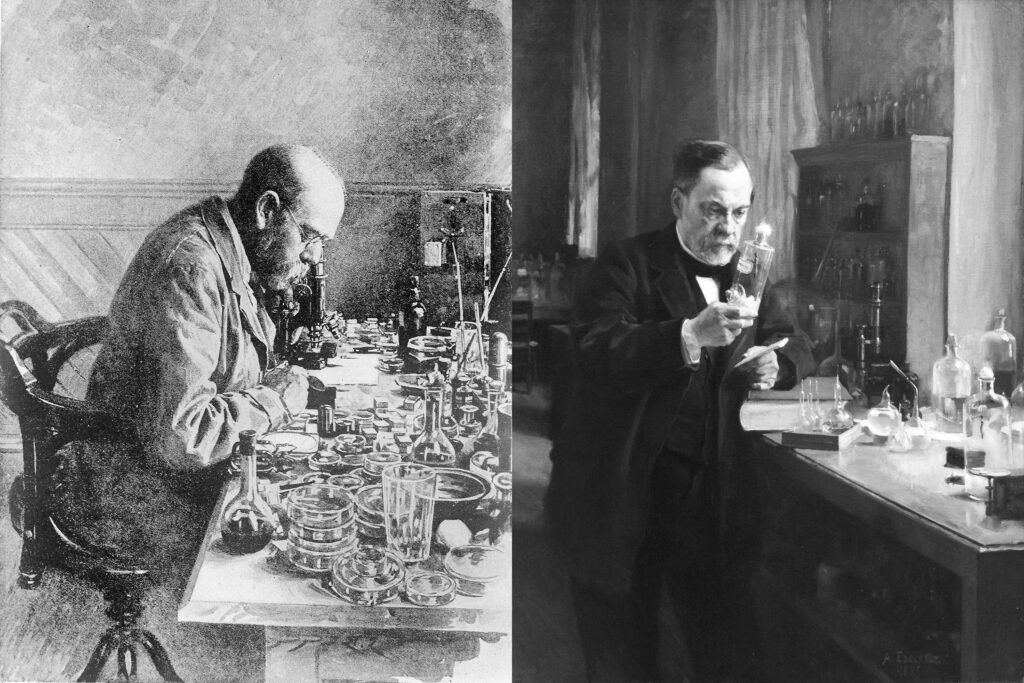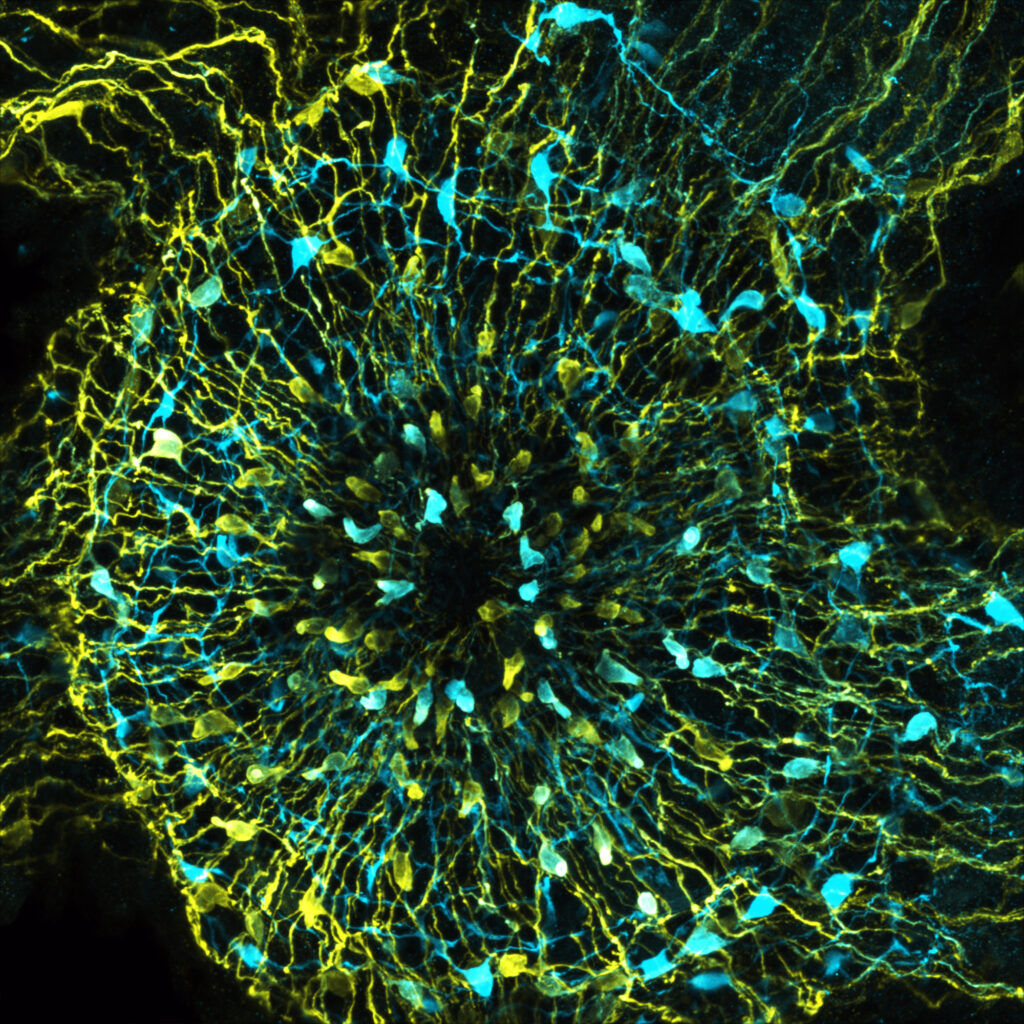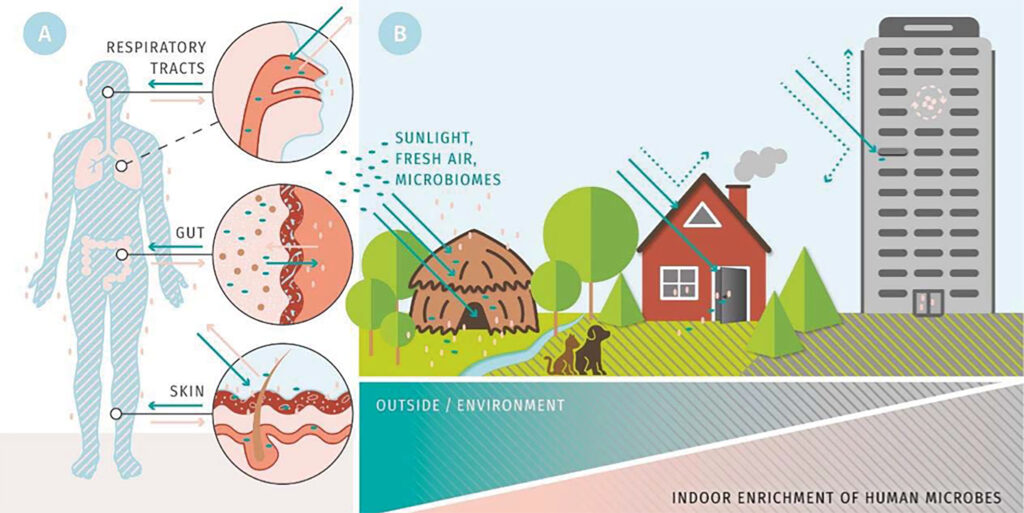A new lexicon in the age of microbiome research
Leading researchers propose a new biological and medical language for describing host-microbe interactions that abandons the paradigm of pathogenic microorganisms
Over the past 20 years, life science research has come to realise that all living beings – from the simplest animal and plant organisms to humans – live in close association with a large number of microorganisms. Together with the multicellular host organism, these symbiotic bacteria, viruses and fungi, which colonise on and in their tissues and form the so-called microbiome, constitute a primarily beneficial community in the form of a metaorganism. Many life processes, including the health and disease of the organism as a whole, can only be understood in the context of this functional interaction between the host organism and microorganisms, for example in the absorption of nutrients, immune function or neuronal processes. At Kiel University, these host-microbe interactions are being investigated in detail in the Collaborative Research Center (CRC) 1182 “Origin and Function of Metaorganisms”.
The new view of life as a functional symbiosis of microorganisms and multicellular host organisms had to prevail against massive resistance. This is also due to the longstanding perception of microorganisms as being mainly harmful. In the past, they were seen almost exclusively as pathogens that medicine and society had to combat for the benefit of human health. This perspective also influenced life science research, which, for example, defined the immune system primarily as the body’s defence mechanism against pathogens. Although the metaorganism principle has largely gained scientific acceptance in the present day, many biological and life science terms are still characterised by this pathological view and not by the actual function of microbes as vital partners of a functioning organism.
A group of internationally renowned scientists, including Professor Martin Blaser from Rutgers University, Professor Margaret McFall-Ngai from the California Institute of Technology and CRC 1182 board member and Kiel Life Science spokesperson Professor Thomas Bosch from Kiel University, are therefore proposing a new terminology for biology and medicine: It is intended to shift the paradigm towards a perception of microorganisms as primarily neutral or useful by coining a modified biological and medical language. Their “New lexicon for the age of microbiome research”, which redefines a large number of fundamental life science terms and is also to be used in academic teaching and public outreach, was published today in the scientific journal Philosophical Transactions of the Royal Society B: Biological Sciences.
Microbes as pathogens: historical development has shaped science and medicine
Since the 19th century at the latest, life science researchers had been aware that the human body and many other living organisms are permanently populated by a “normal” microbial colonization, even in a healthy state. However, from around the 1850s, their focus was primarily on the pathogenic effect of microorganisms, which science and medicine had previously repeatedly suspected, but were largely powerless in the face of. For example, Louis Pasteur and Robert Koch, among other researchers in this era, succeeded for the first time in attributing a number of infectious diseases to certain microbial organisms in the sense of a “germ theory”.
For the longest time in human history, various infectious diseases were among the main causes of death and led to people dying much earlier on average than today, often in childhood. It was not until the end of the 19th century that newly acquired scientific knowledge led to extensive hygiene measures being introduced in the interests of public health. At around the same time, the first vaccines were also applied to prophylactically suppress certain viral pathogens and the diseases they cause at a population level. Thanks to the systematic introduction of antibiotic agents on a large scale from the second half of the 20th century onwards, it also became possible to greatly reduce bacterial infections. Medical progress has therefore ensured that the majority of infectious diseases are under control and that people are living healthier and longer lives than ever before.
Accordingly, a view of microorganisms developed in this era that interpreted them primarily as threatening, disease-causing pathogens. “The task of science and medicine was therefore to defeat this threat and win the battle against microorganisms for the benefit of human health. This way of thinking continues to influence biology and medicine to this day and has also shaped their terminology and definitions, their language as a whole,” says Bosch. Expressions such as “pathogen”, “infection” or “antimicrobial peptide” are still part of the standard scientific repertoire to describe the interactions between host organisms and microorganisms.
Updated lexicon proposes modified terms for a new way of looking at biology
However, the systematic suppression of microorganisms has also unintentionally brought about new health challenges: the current sharp increase in so-called environmental diseases is directly linked to the disruption and depletion of the human microbiome, which can be traced back to the incorrect and over-intensive use of antibiotics or misguided hygiene measures, for example. This connection has become clear thanks to the new technology of high-throughput genome sequencing. In recent years, it has made it possible to determine and analyse the composition and balance of the microbial colonisation of host organisms in detail. Subsequently, an ever better understanding of the interactions of hosts with this multitude of microorganisms has made it possible to recognise a disturbed microbiome as the cause of certain environmental diseases. “This made it clear that there are very few real microbial pathogens. In contrast, there is an overwhelming majority of microorganisms that behave either neutrally or benignly, whose function depends on the overall context of a ‘normal’ microbiome and which can only exceptionally become opportunistic pathogens,” summarises Bosch.
“This current knowledge about the crucial importance of a normal, healthy microbiome for the functions and health of the host organism should in future also be expressed in an adapted language and thus gradually promote a more positive perception of microorganisms,” says Bosch. A corresponding redefinition of scientific language would therefore require abandoning once and for all the ‘war-metaphor’ that characterizes an ongoing fight against microbes and the corresponding language that is reduced to their harmfulness. “If we start to use and develop this new lexicon, we will be better able to describe the complex interactions between hosts and their microbes for what they really are: an essential foundation of life,” says Bosch. A few examples show how the historically passed down disease-centred view of microorganisms still prevails today and how updated terms now suggested by the authors could replace it in the future:
• Today, the word “infection” still generally refers to the invasion and thriving of a microorganism and its effect on the tissues of a host organism. Instead, the term “colonisation” neutrally describes the fact that microorganisms colonise host tissues and develop a beneficial, neutral or harmful effect, depending on the context.
• The term “antimicrobial peptide (AMP)” was previously used to describe a protein of the host organism that can kill or suppress pathogens. From today’s perspective, the term “microbiota-regulating peptide (MRP)” is more appropriate, i.e. a host protein that can promote or inhibit the colonisation of beneficial, neutral or harmful microorganisms, depending on the circumstances.
• The common term “pathogen” refers to a disease-causing microorganism that invades the normal microbial colonisation from the outside and triggers disease. The term “amphibiont” is more neutral – a microorganism whose relationship to the host organism can change from helpful to harmful and vice versa depending on the environmental conditions.
Original publication:
Thomas C.G. Bosch, Martin J. Blaser, Edward Ruby and Margaret McFall-Ngai (2024): A new lexicon in the age of microbiome research. Philosophical Transactions B First published: 18. March 2024 DOI: 10.1098/rstb.2023.0060
Images are available for download:
https://www.uni-kiel.de/de/pressemitteilungen/2024/041-bosch-philtrans-koch-pasteur.jpg
Caption: Among others, Louis Pasteur (right) with his work on the rabies pathogen and Robert Koch, who identified the tuberculosis pathogen, succeeded in the 19th century in tracing infectious diseases back to certain microbial organisms.
© Wellcome Libary, London: Robert Koch, Photogravure of a gouache painting, Licence: CC BY 4.0 deed / Portrait Louis Pasteur by Albert Edelfelt, Public domain.
https://www.uni-kiel.de/de/pressemitteilungen/2024/041-bosch-philtrans-mrp.jpg
Caption: Exemplary structural illustration of an antimicrobial peptide (AMP): Such host proteins, which regulate the colonisation of beneficial, neutral or harmful microorganisms depending on the context, should in future be more appropriately referred to as microbiota-regulating peptides (MRP).
© Prof. Thomas Bosch
Contact:
Prof. Thomas Bosch,
Spokesperson Priority Research Area
„Kiel Life Science“ (KLS), Kiel University
Phone: +49 (0) 431-880-4170
Email: tbosch@zoologie.uni-kiel.de
More information:
CRC 1182 “Origin and Function of Metaorganisms”, Kiel University:
www.metaorganism-research.com


